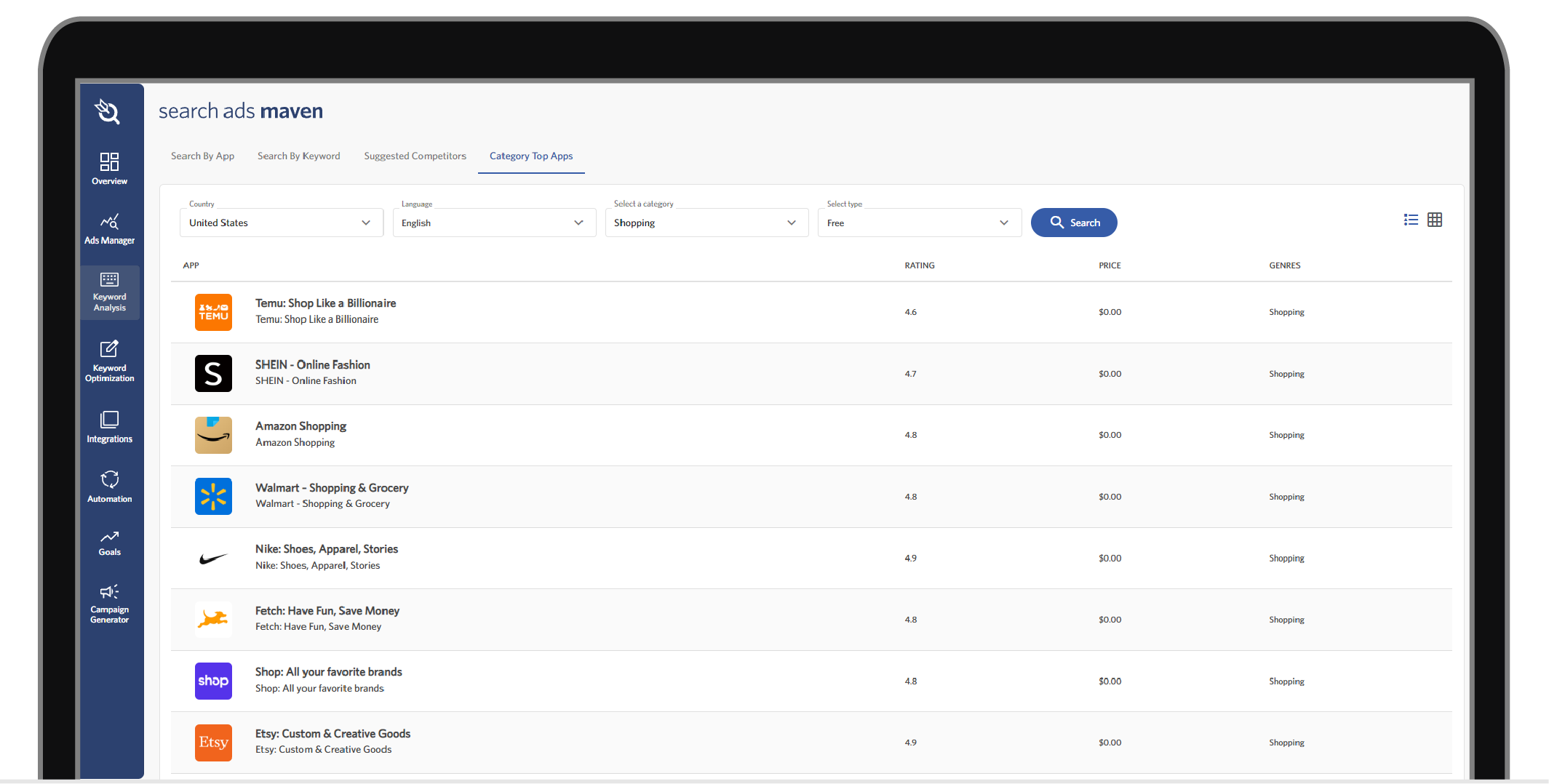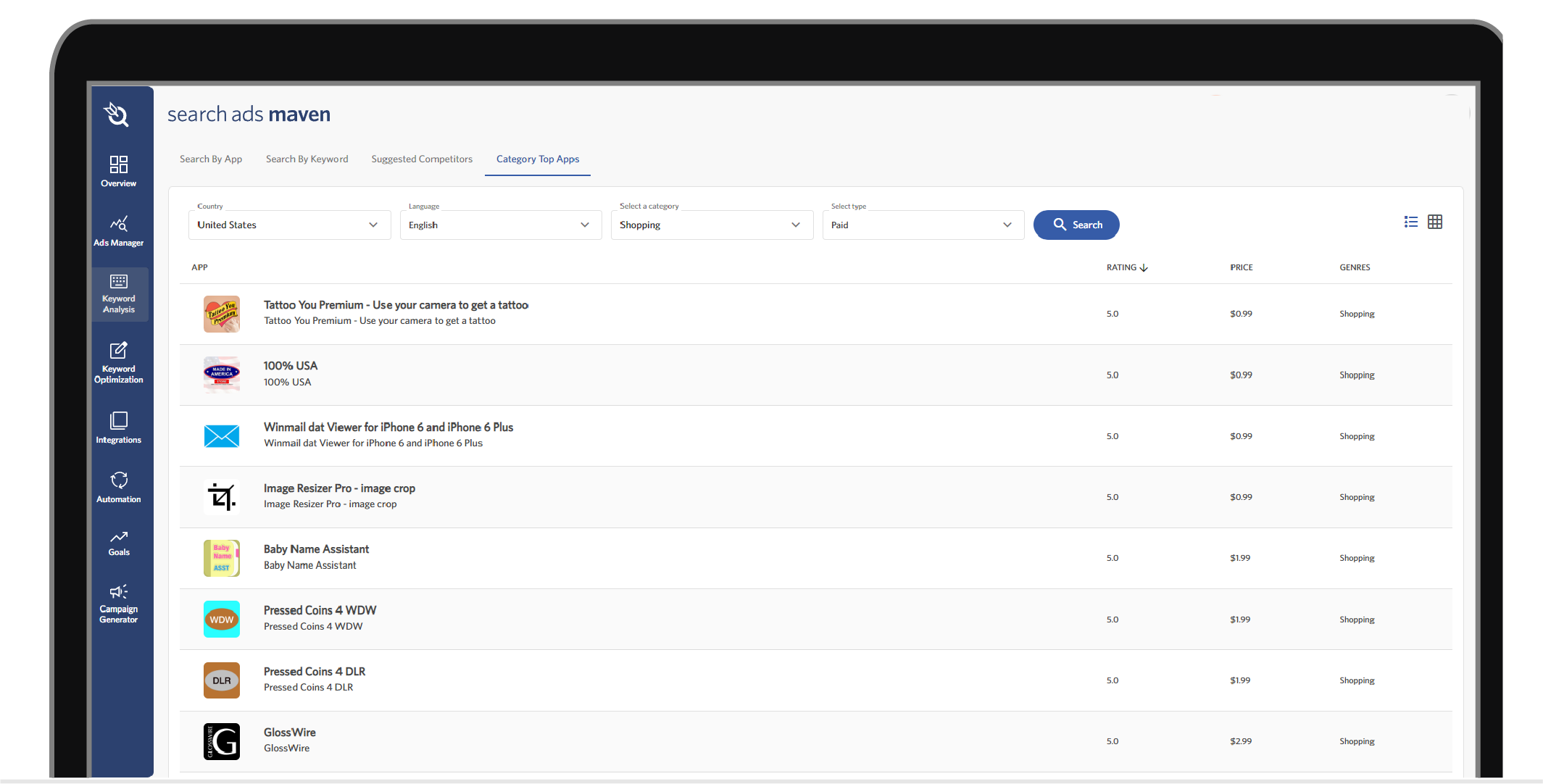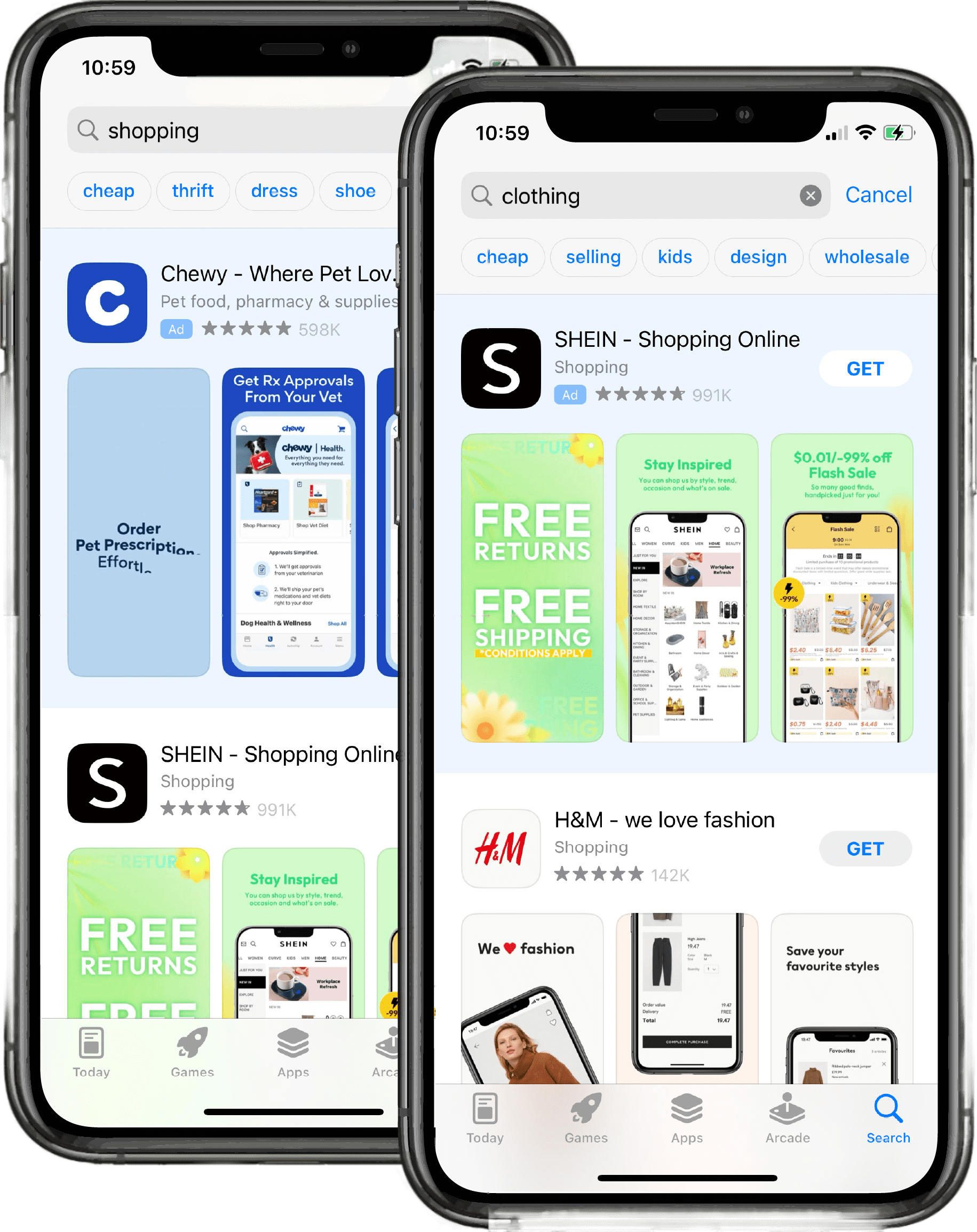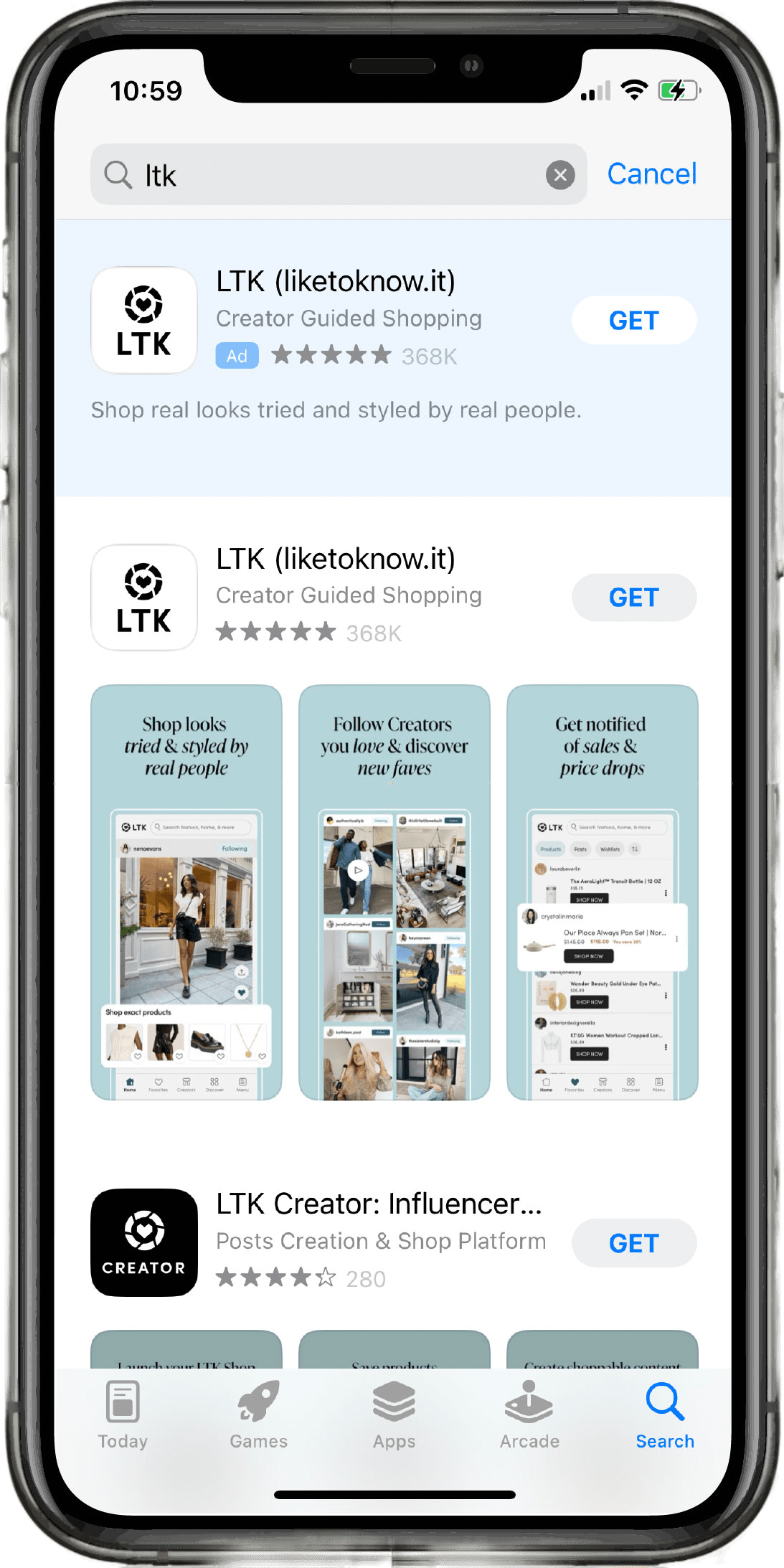Get your installs at a discount with proper Apple Search Ads (ASA) strategy
For an industry dominated by some of the biggest corporations in history, it’s no surprise that the competition for shopping app installs can be quite daunting. Taking that into account, there is a lot of possibility to not only grow your app installs, but also grow your profits using the power of ASA. First, let’s see the shopping category and the growth it has been seeing over the past decade:
According to Statistica:
- Total revenue in the Shopping segment is projected to reach US$0.92bn in 2022.
- Total revenue is expected to show an annual growth rate (CAGR 2022-2027) of 7.96%, resulting in a projected market volume of US$1.46bn by 2027.
- In-app purchase (IAP) revenue in the Shopping segment is projected to reach US$307.00m in 2022.
- Paid app revenue in the Shopping segment is projected to reach US$46.52m in 2022.
- Advertising revenue in the Shopping segment is projected to reach US$567.70m in 2022.
- The number of downloads in the Shopping segment is projected to reach 1,124.6m downloads in 2022.
- The average revenue per download currently is expected to amount to US$0.82.
People are shopping on their mobile devices more than ever before, and this trend will only continue to increase. Not only that, but people are also using their phones to gather information on whether to make a purchase, search for discounts, access order history, and track shipments. Because of this, ensuring that your shopping app is installed on as many mobile devices as possible is crucial, and one of the reasons why the cost per tap for shopping apps is one of the highest.

To truly understand the value of bid cost in ASA, it will come down to several factors, but ensuring that you get the most valuable installs possible is crucial.
Let’s get started!
What are shopping apps? Right now, you are probably thinking about what apps you have installed on your phone, and there is a good chance you have at least one or more you would describe as shopping apps. Yet, the shopping category is far more expansive than simply Walmart or Amazon. Shopping apps can let you store shopping lists, find discount codes, or reward you with purchase points.


eCommerce apps
These are the apps you are probably most familiar with, as they either have traditional storefronts (like Sephora) or online marketplaces (like eBay or Amazon). With these apps, you can use your phone to purchase products and have them shipped to you or a nearby store or storage locker. It’s crucial for these apps to create a seamless and easy shopping experience across all channels, from digital to a physical brick-and-mortar location.
Discount finder apps
These apps don’t offer physical products or services, but they allow users to purchase those products or services at a discount (e.g., Groupon, Living Social). The express purpose of these apps is to shop for discounts and promotions, although they can also be used to find specific products.
Social shopping apps
Social shopping apps are still on the rise. While they may be more of a bridge between social networks and eCommerce, they clearly sit closer to the eCommerce side of the river. From Facebook Marketplace to Poshmark, it’s clear that these apps are seeing a lot of growth in the App Store.
ASA shopping app considerations
When using ASA, shopping apps should consider these top factors:
Ad Groups and Target Audience
ASA doesn’t offer many different demographic choices for targeting in the App Store, but the ones they have can make a significant impact for your strategy.
- Location – People everywhere shop so there isn’t a location on the planet you would want to exclude. Yet the amount you want to spend on bids for each location will differ.
- Device Type – Based on your type of shopping app, you will know whether a user is more likely to use it on r their iPhone or iPad. Even if they use it on both, the purpose and value of each install will be different.
- Gender & Age – Clearly useful depending on your app, but in today’s marketplace there aren’t really any exceptions here. Gender will be a major factor when designing specific Custom Product Pages (CPP), as well as age, which will determine the value of your bid amounts.
- Customer Type – This is where you can target new users, existing users, or users of your other apps. It’s clear your strategy will be different for new or existing customers, but targeting a user that already has one of your apps can open up the possibility of linking yourself between your social app and your shopping app. Each one of these gives you the ability to not only customize your keyword lists between them, but also continue to use your CPPs to show promotions or screenshots that appeal to users and either get an install or a re-install for your app.
Keyword Optimization and Value
For the shopping category, competition for the bigger keywords can be fierce, especially for apps looking to grow their user base as fast as possible. Brand keyword lists may vary, but using different ad groups can help break out brand terms that are specific to gender, age, and device type. Conversely, category campaigns may include a larger list than what you see in most app categories.
Regular eCommerce apps should focus on long-tail keywords that can improve category ranking. The true value of the keyword “shopping” can be hard to gauge, but “luxury shopping” noticeably enriches its value.
Competitor campaigns here could be a little more focused. There is a good chance some of these keywords can become brand keywords. It’s important to note that a click off an ad from a keyword search will raise your relevance and organic rank for that keyword as well. Therefore, the dividends from competitor campaigns will continue to grow even after it ends.
Ad Design and Conversion
Apple, and the users of Apple products, place a strong emphasis on design for everything about or inside their devices. You need to ensure the ad has a visually appealing and professional design that stands out from others.
Check out these two ads I got when I searched for “shopping” and “clothing.”

With a generic term like “shopping,” you need to think of the reason why someone would search for that term alone. They want to download a shopping app but aren’t interested in anything specific about it. Mercari, a social shopping app, wins the keyword bid and uses screenshots to highlight the words “Buy and sell almost anything,” along with clear images of the app’s shopping experience.
As for “clothing,” the search is a little more specific but still just a category keyword for almost all apps. LTK (liketoknow.it) decided with their app to focus on the social shopping experience side. While the top organic search is a traditional multi-channel eCommerce app, LTK is clearly marketing themselves as an alternative to those apps with a more organic shopping experience. It could be that the CPP they are using in this ad is their default, but if we do a basic search on LTK, we can recognize that this app is likely using every CPP made available to them by Apple.

Shopping apps should be using CPPs to their advantage in the App Store. Make sure your CPPs are synergized with your other marketing campaigns, so you present a clear message to current or new customers.
Today, Product Page & Search Tabs Ads
The strategy for Product and Search tab campaigns will vary depending on the app. You aren’t going to be able to use any CPPs with these campaigns, and you can only target the audiences mentioned earlier. Consider using the Search tab slots as you would a category campaign and your Product tab ads with your competitor campaigns.
As for the Today tab, shopping apps have a fantastic opportunity to leverage the custom CPPs they use to generate massive interest in their app. Consider using timely promotions in your Today tab ads to not only fuel new downloads but spark interest in customers who already have your app installed. It’s for this reason that having an MMP integrated with your campaigns is so important. Without it, you can only measure ASA campaigns based on the number of installs and not in-app activity.
If the app is already installed, tapping on an ad could cause the customer to reopen the app outside of the App Store. Consider the following scenario: I open the App Store to download a hot new game I’m interested in, but I’m presented with a shopping app ad on the Today tab. It’s an app I like, and I tap on the ad, but I continue downloading the game. Afterward, I open the shopping app and make a purchase . Incremental measurement of your advertising with a MMP integration reveals the true value of these ASA ad campaigns like never before, especially for seasonal or promotional campaigns.

